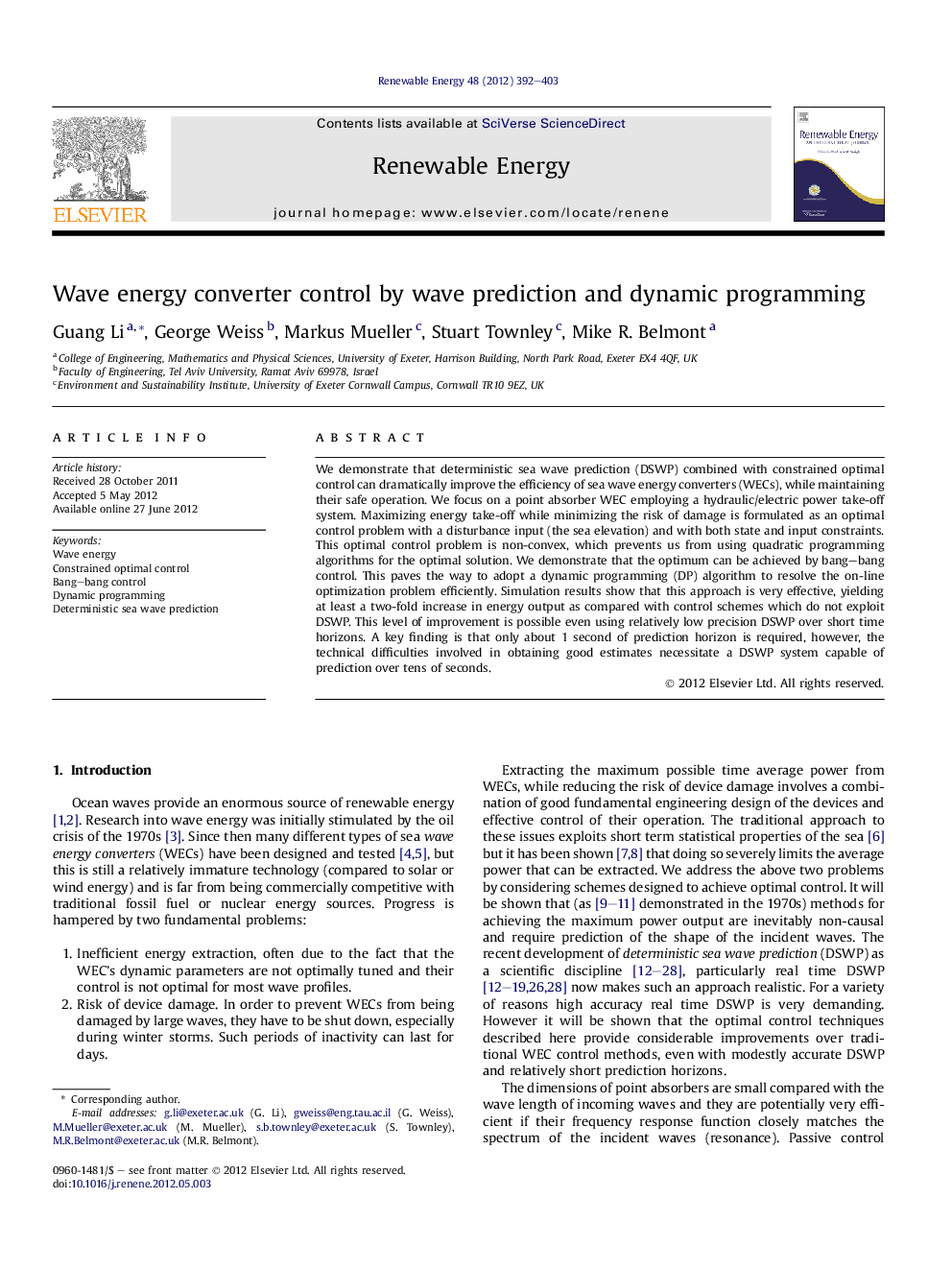| Article ID | Journal | Published Year | Pages | File Type |
|---|---|---|---|---|
| 300893 | Renewable Energy | 2012 | 12 Pages |
We demonstrate that deterministic sea wave prediction (DSWP) combined with constrained optimal control can dramatically improve the efficiency of sea wave energy converters (WECs), while maintaining their safe operation. We focus on a point absorber WEC employing a hydraulic/electric power take-off system. Maximizing energy take-off while minimizing the risk of damage is formulated as an optimal control problem with a disturbance input (the sea elevation) and with both state and input constraints. This optimal control problem is non-convex, which prevents us from using quadratic programming algorithms for the optimal solution. We demonstrate that the optimum can be achieved by bang–bang control. This paves the way to adopt a dynamic programming (DP) algorithm to resolve the on-line optimization problem efficiently. Simulation results show that this approach is very effective, yielding at least a two-fold increase in energy output as compared with control schemes which do not exploit DSWP. This level of improvement is possible even using relatively low precision DSWP over short time horizons. A key finding is that only about 1 second of prediction horizon is required, however, the technical difficulties involved in obtaining good estimates necessitate a DSWP system capable of prediction over tens of seconds.
► We investigate constrained optimal control of sea wave energy converters. ► The objective is to maximize energy take-off while minimizing the risk of damage. ► The optimal control problem is analyzed using Pontryagin's minimum principle. ► Dynamic programming is employed to resolve the on-line optimization problem. ► Simulation result shows at least a two-fold increase in energy output.
